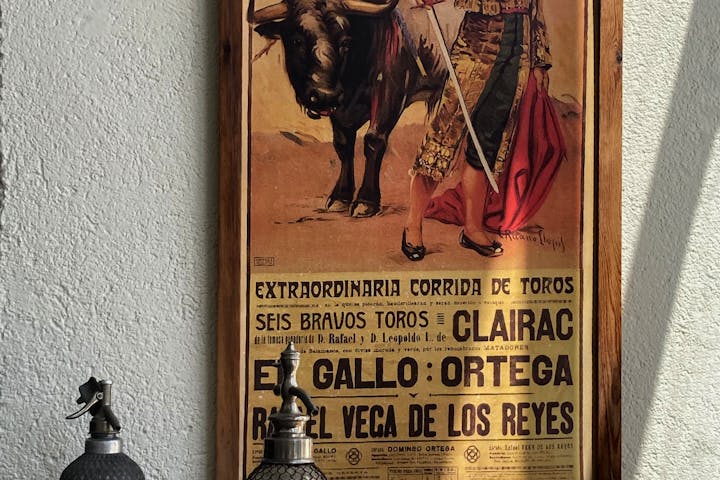Have you ever found yourself curiously pondering what to call someone from a specific place? Whether you’re chatting with friends, diving into travel plans, or exploring the rich tapestry of cultures around the world, understanding gentilicios can add depth to your conversations. Enter ‘Cual-es-el-gentilicio-de’—a phrase that opens the door to discovering how we refer to people based on their origins. It’s not just about words; it’s about connecting with identities and histories. Let’s embark on this journey together as we unlock the power of gentilicios and learn how they can enhance our language skills and cultural awareness!
What is ‘Cual-es-el-gentilicio-de’?
‘Cual-es-el-gentilicio-de’ is a Spanish phrase that translates to “What is the demonym of?” It’s commonly used when asking about the term that describes people from a specific place.
For instance, if you want to know what we call someone from Barcelona, you would ask this question. The answer? Barcelonés or Barcelonesa! https://tanfacil.net/educacion/cual-es-el-gentilicio-de-barcelona-4497.html
Understanding this phrase can enhance your conversational skills in Spanish and deepen your cultural appreciation. Demonyms provide insight into identity and heritage, connecting individuals with their geographic roots.
Moreover, knowing how to use ‘Cual-es-el-gentilicio-de’ allows for engaging discussions about various cultures and places around the globe. From cities to countries, each gentilicio tells a story waiting to be explored.
Understanding the Importance of Gentilicios
Gentilicios are more than just words; they reveal cultural identity. They connect people to their roots and heritage, showcasing where someone comes from.
When you understand gentilicios, you’re diving deeper into the fabric of language. Each term tells a story about history, geography, and community. For example, knowing that the gentilicio for someone from Barcelona is “barcelonés” enriches your understanding of Spanish culture.
In addition to enhancing vocabulary skills, using gentilicios correctly fosters effective communication. It allows for precise descriptions during conversations or writing. This specificity not only demonstrates linguistic proficiency but also shows respect for diverse cultures.
Recognizing how these terms function can improve language learning strategies too. Instead of memorizing arbitrary lists of adjectives, learners can integrate these meaningful words into everyday dialogue—making lessons stick better in memory over time.
How to Use ‘Cual-es-el-gentilicio-de’ Effectively
Using ‘Cual-es-el-gentilicio-de’ can be straightforward once you understand its structure. Begin by identifying the place in question. This could be a city, country, or even a region.
Next, frame your question clearly. For instance, if you’re curious about Barcelona, simply ask: “¿Cuál es el gentilicio de Barcelona?” This translates to “What is the demonym for Barcelona?”
Make sure to practice with different locations. It’s an excellent way to expand your vocabulary and cultural knowledge simultaneously.
Engaging with native speakers also enhances your learning experience. They can provide insights into common usage that textbooks might miss.
Don’t shy away from exploring online resources dedicated to this topic; they often contain quizzes and interactive tools that make learning fun and effective.
Examples and Practice Exercises
To master the concept of gentilicios, practicing with real examples is essential. Let’s dive into some engaging exercises.
Start by identifying the gentilicio for various cities. For instance, what do you call someone from Madrid? The answer is “madrileño.” Now try this: What about a person from Buenos Aires?
Next, create sentences using these gentilicios. “El madrileño disfruta de la cultura vibrante de su ciudad.” This not only helps reinforce your learning but also enhances your sentence structure.
You can also turn it into a fun game. Challenge friends to name as many gentilicios as possible within a time limit.
Use online quizzes or flashcards for self-testing. They offer an interactive way to remember and recall these terms effectively while keeping the process enjoyable and dynamic!
Common Mistakes to Avoid
When learning about gentilicios, it’s easy to make a few common mistakes. One of the biggest errors is confusing the gentilicio with the name of the city or country itself. For example, many might think “Barcelona” and “barcelonés” are interchangeable.
Another pitfall involves incorrect gender use. Gentilicios can change form based on whether you’re referring to males or females. Saying “español” for both genders misses that women should be referred to as “española.”
Mispronunciation also frequently occurs. It’s important to practice saying these terms correctly since proper pronunciation helps in communication.
Don’t forget context matters! Using a gentilic inappropriately can lead to misunderstandings. Keeping cultural nuances in mind will enhance your language skills significantly.
Benefits of Incorporating Gentilicios into Your Language Learning
Incorporating gentilicios into your language learning enriches your vocabulary. It helps you connect words with places, enhancing cultural understanding.
When you know the gentilic for a city or country, it opens doors to conversations about geography and identity. This knowledge makes discussions more engaging.
Using gentilicios can also boost your confidence in speaking. You’ll impress native speakers by using terms that show depth in your language skills.
Moreover, recognizing these terms aids memory retention. Associating them with specific locations creates stronger mental links. https://tanfacil.net/educacion/cual-es-el-gentilicio-de-barcelona-4497.html
Incorporating gentilicios fosters curiosity about different cultures and histories. You’ll find yourself exploring new regions through their unique names and stories.

Conclusion
The exploration of ‘Cual-es-el-gentilicio-de’ opens a door to understanding the cultural and linguistic diversity of Spanish-speaking regions. By embracing gentilicios, learners not only expand their vocabulary but also gain insight into the identities that shape these communities.
Incorporating this knowledge enhances conversational skills and fosters deeper connections with native speakers. As you navigate through examples, practice exercises, and avoid common pitfalls, you’ll find yourself more confident in using gentilicios correctly.
Whether you’re traveling or engaging in discussions about geography and culture, mastering ‘cual-es-el-gentilicio-de’ can be a valuable asset on your language learning journey. Embrace the challenge—your efforts will surely enrich your understanding of both language and culture.




